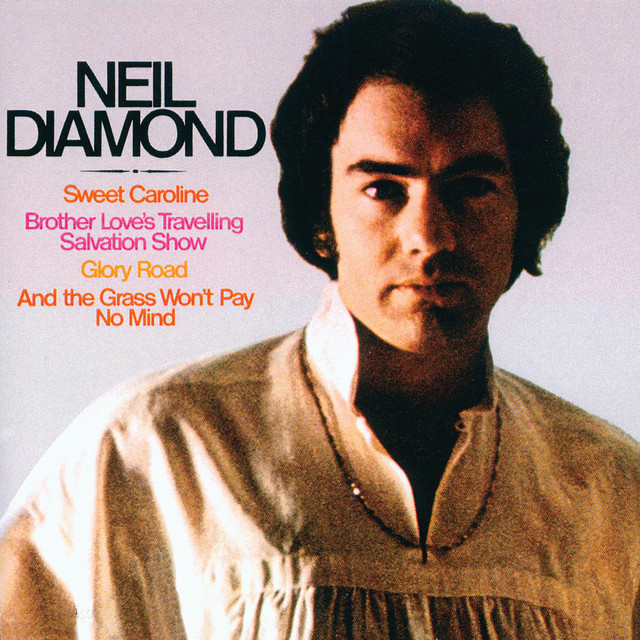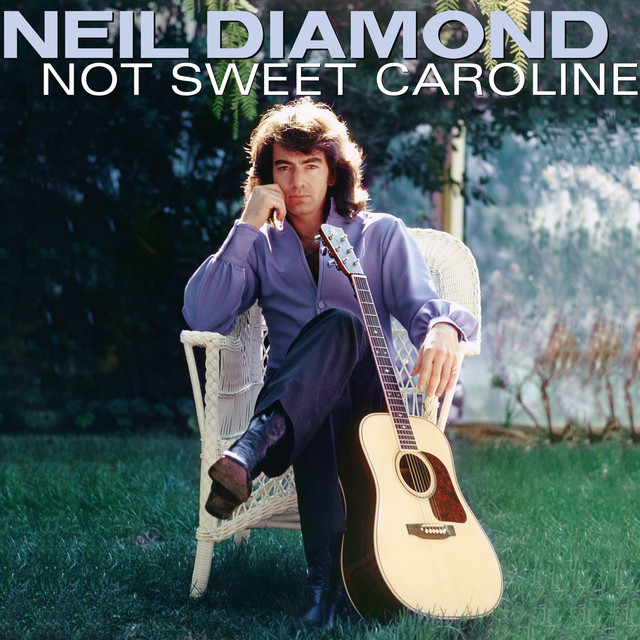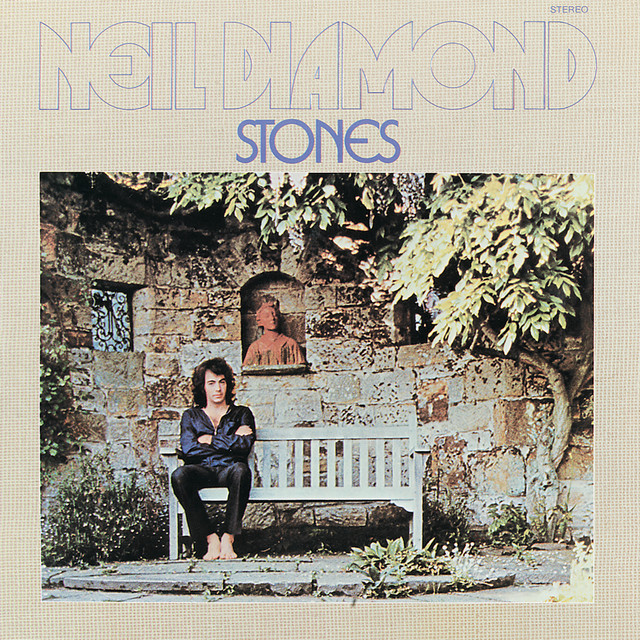· Alex Harris · Trending
Neil Diamond Songs: A Journey Through Decades of Timeless Hits (with over 20 songs analysed)
![<p>Neil Diamond. The name itself evokes a powerful image: a charismatic performer, a booming baritone voice, and songs that have become the soundtrack of countless lives. But beyond the larger-than-life persona lies a prolific songwriter whose influence extends far beyond his own recordings. Did you know that iconic hits like “I’m a Believer” (The Monkees) […]</p>](/_image?href=https%3A%2F%2Fneonmusic.online%2Fwp-content%2Fuploads%2F2024%2F04%2F444-7-4.jpg&w=900&h=506&f=webp)
Neil Diamond. The name itself evokes a powerful image: a charismatic performer, a booming baritone voice, and songs that have become the soundtrack of countless lives.
But beyond the larger-than-life persona lies a prolific songwriter whose influence extends far beyond his own recordings.
Did you know that iconic hits like “I’m a Believer” (The Monkees) and “Red, Red Wine” (UB40) were penned by the one and only Neil Diamond?
This article delves into the stories behind some of Neil Diamond’s most recognisable songs, both as a performer and a songwriter, exploring the creative spark, the recording process, and the enduring legacy of these musical gems.
“Sweet Caroline” (1969): A Song with a Double Identity
Recorded at American Sound Studio in Memphis, Tennessee, “Sweet Caroline” remains shrouded in a delightful mystery.
Diamond himself has offered two inspirations for the song. One story claims it was a tribute to his wife, Marcia, though the name was changed for melodic flow.

However, another tale suggests the muse was a young Caroline Kennedy, gracing the cover of a magazine.
Regardless of its origin, “Sweet Caroline” soared to No. 4 on the Billboard Hot 100 and continues to be a fan favourite, even earning a spot in the National Recording Registry for its cultural significance.
Listen to Sweet Caroline by Neil Diamond.
Interesting Fact: “Sweet Caroline” has become an unofficial anthem for the Boston Red Sox, sung by fans during games.
“You Don’t Bring Me Flowers” (1978): A Marital Misunderstanding Turned Masterpiece
This melancholic ballad, co-written with Carole Bayer Sager, paints a picture of a deteriorating relationship.
Recorded in Los Angeles with session musicians like drummer Hal Blaine and bassist Carol Kaye, the song reportedly stemmed from a real-life argument between Diamond and his then-wife, Marcia.
“You Don’t Bring Me Flowers” resonated deeply with couples, topping the Billboard Hot 100 and becoming a karaoke staple.
Did you know? The iconic line “Diamond rings, and I thought it was forever” was actually improvised by Barbra Streisand during their recording session for the song.
“Forever in Blue Jeans” (1978): A Celebration of Enduring Love
Emerging from the American Sound Studio sessions, “Forever in Blue Jeans” is a testament to the simple joys of love and companionship.
The song’s optimistic message and catchy melody propelled it to No. 2 on the Billboard Hot 100, solidifying Diamond’s status as a pop icon.
Listen to Forever in Blue Jeans by Neil Diamond.
Chart Success: “Forever in Blue Jeans” was also a major hit internationally, reaching No. 1 in the UK and Australia.
“Song Sung Blue” (1972): A Heartfelt Plea for Understanding
Composed during a tumultuous period in his personal life, “Song Sung Blue” is a raw and emotional ballad. Backed by the iconic Memphis Horns at American Sound Studio, the song reflects feelings of loneliness and isolation.
It peaked at No. 1 on the Billboard Hot 100, showcasing Diamond’s ability to connect with listeners on a deeply personal level.
Listen to Song Sung Blue by Neil Diamond.
Critical Acclaim: “Song Sung Blue” earned Diamond a Grammy nomination for Best Male Pop Vocal Performance.
“Cracklin’ Rosie” (1970): A Nostalgic Ode to Young Love
Inspired by a chance encounter with a young woman in Australia, “Cracklin’ Rosie” is a lighthearted, piano-driven song brimming with youthful energy.
Recorded in London with session musicians, the song’s infectious melody and relatable story resonated with audiences worldwide, reaching No. 6 on the Billboard Hot 100.
Listen to Cracklin’ Rosie by Neil Diamond.
Live Favourite: “Cracklin’ Rosie” remains a staple in Neil Diamond’s live performances, often getting the crowd singing along.
“Hello Again” (1981): A Second Chance at Love
Taking a more electronic pop direction, “Hello Again” tells the story of rekindled love. Produced by Robbie Robertson of The Band, the song’s soaring vocals and pulsating synths were a departure from Diamond’s traditional sound.
However, it proved successful, reaching No. 2 on the Billboard Hot 100 and showcasing his artistic evolution.
Listen to Hello Again by Neil Diamond.
Cultural Impact: “Hello Again” was featured in the hit movie “Coming Home,” further solidifying its place in pop culture.
“Solitary Man” (1966): A Haunting Ballad of Loneliness
Emerging from the early days of Diamond’s career, “Solitary Man” is a powerful ballad that explores themes of isolation and longing.
The song’s sparse instrumentation and introspective lyrics showcase his songwriting prowess.
Though it didn’t achieve major chart success initially, “Solitary Man” has become a fan favourite, covered by artists like Johnny Cash and Elvis Presley.
Listen to Solitary Man by Neil Diamond.
Enduring Legacy: “Solitary Man” continues to resonate with listeners, appearing in numerous films and television shows.
“Love on the Rocks” (1980): A Candid Look at Marital Discord
This ballad, co-written with Gilbert Bécaud, appeared in the 1980 movie The Jazz Singer and was performed by Diamond on the soundtrack album to the film.
“Love on the Rocks” is a poignant ballad that reflects the pain and disillusionment of a failing relationship, and it became a significant hit for Neil Diamond, especially resonating with listeners who could relate to its themes.
However, it became a commercial success, reaching No. 2 on the Billboard Hot 100, and resonated with couples navigating troubled waters.
Listen to Love on the Rocks by Neil Diamond.
Genre Experimentation: “Love on the Rocks” demonstrates Diamond’s willingness to experiment with different genres, keeping his music fresh and relevant.
“Brother Love’s Travelling Salvation Show” (1969): A Theatrical Storytelling Masterpiece
This epic, seven-minute mini-opera tells the story of a charismatic preacher and his travelling revival show. Recorded with the Memphis Horns and backing singers, the song is a tour de force of Diamond’s songwriting and storytelling abilities.
Though it didn’t achieve mainstream chart success, “Brother Love’s Travelling Salvation Show” has become a cult classic, admired for its ambition and theatricality.
Listen to Brother Love’s Travelling Salvation Show by Neil Diamond.
Live Spectacle: “Brother Love’s Travelling Salvation Show” has been a highlight of Neil Diamond’s live performances, often incorporating elaborate costumes and theatrical elements.
“Play Me” (1972): A Piano Anthem for the Dreamers
Emerging from the fruitful American Sound Studio sessions, “Play Me” is a powerful ballad that celebrates the transformative power of music.
The song’s driving piano melody and heartfelt lyrics resonate with anyone who has found solace in music.
The song peaked at #11 in the United States in September of that year. It was listed by Billboard as #27 of his best 30 songs. Listen to Play Me by Neil Diamond.
Live Energy: “Play Me” remains a highlight of Neil Diamond’s live shows, often featuring an extended piano solo that showcases his musical virtuosity.
“Longfellow Serenade” (1974): A Playful Ode to Unrequited Love
“Longfellow Serenade” emerged as one of Neil Diamond’s captivating singles, showcasing his unique blend of storytelling and melody. The recording sessions, marked by a collaborative atmosphere, brought out the essence of Diamond’s musical vision.
Neil Diamond has a knack for weaving complex emotions into his music, and “Longfellow Serenade” is no exception. The song serves as a whimsical tribute to the pangs and yearnings of unrequited love, using the metaphor of a serenade to express deep affection and longing. Its title, possibly inspired by the famous American poet Henry Wadsworth Longfellow, adds a layer of poetic elegance to the song’s narrative.
Upon its release, “Longfellow Serenade” charmed its way into the hearts of listeners, securing a commendable position on the music charts. Its melodic allure and lyrical depth resonated widely, making it a memorable entry in Diamond’s discography.
Listen to Longfellow Serenade by Neil Diamond.
Genre Exploration: “Longfellow Serenade” showcases Diamond’s ability to blend genres, seamlessly incorporating folk elements into his signature sound.
“Cherry, Cherry” (1967): A Breezy Pop Song with a Twist
This upbeat, sing-along track tells the story of a blossoming teenage romance. Released early in Diamond’s career, “Cherry, Cherry” showcases his knack for crafting catchy pop melodies.

The song reached No. 6 on the Billboard Hot 100, establishing him as a rising star. Listen to Cherry, Cherry by Neil Diamond.
Early Success: “Cherry, Cherry” was one of Diamond’s first major hits, paving the way for his future success.
“Heartlight” (1982): A Reflective Look at Love and Loss
This introspective ballad, co-written with Carole Bayer Sager, and Burt Bacharach, explores the complexities of love and loss.
Backed by a lush orchestral arrangement, “Heartlight” showcases Diamond’s ability to deliver emotional depth with his vocals.
Though it didn’t replicate the chart success of some of his earlier hits, the song remains a poignant addition to his discography.
Listen to Heartlight by Neil Diamond.
Lyrical Collaboration: “Heartlight” marks one of the few songwriting collaborations in Neil Diamond’s career, highlighting his versatility as a musician.
“Kentucky Woman” (1967): A Haunting Ballad of Longing
Emerging from his early songwriting days, “Kentucky Woman” showcases Diamond’s ability to weave storytelling into his music.
The song’s melancholic melody and evocative lyrics paint a picture of lost love and longing.
The track received notable success upon release, and has gained cult status among fans.
Listen to Kentucky Woman by Neil Diamond.
Enduring Appeal: “Kentucky Woman” continues to resonate with listeners for its raw emotion and timeless themes.
“Girl, You’ll Be a Woman Soon” (1967): A Coming-of-Age Anthem
This poignant ballad, originally written for the musical “Sweet Caroline,” captures the bittersweet transition from childhood to womanhood.
The song’s gentle melody and relatable lyrics resonated with a generation of young women.
Listen to Girl, You’ll Be a Woman Soon by Neil Diamond.
Cultural Touchstone: “Girl, You’ll Be a Woman Soon” has been featured in numerous films and television shows, solidifying its place in pop culture.
“Holly Holy” (1969): A Spiritual Reflection
This introspective ballad explores themes of faith and spirituality. The song’s sparse instrumentation and introspective lyrics showcase a different side of Diamond’s songwriting.
It was a successful follow-on to “Sweet Caroline”, reaching #6 on the U.S. pop singles chart by December. The song also reached #5 on the Easy Listening chart. It became a gold record and then eventually a platinum record.
Listen to Holly Holy by Neil Diamond.
Spiritual Exploration: “Holly Holy” demonstrates Diamond’s willingness to explore themes beyond love and loss in his music.
“Delirious Love” (2005): A Dramatic Ballad of Passion
This dramatic ballad, written by Neil Diamond, portrays the intensity of passionate love.
Featuring soaring vocals and a driving rhythm section, “Delirious Love” showcases Diamond’s ability to tap into the raw emotions of love.
Despite not achieving major chart success, the song remains a powerful addition to his repertoire.
Listen to Delirious Love by Neil Diamond.
Theatrical Flair: “Delirious Love” exemplifies Diamond’s penchant for dramatic storytelling, evident in both his songwriting and live performances.
“September Morn” (1979): A Nostalgic Look at Lost Love
This introspective ballad, co-written with Gilbert Bécaud, paints a vivid picture of a summer romance gone wrong.
The song’s melancholic melody and evocative lyrics resonate with anyone who has experienced heartbreak.
The title track was an international chart hit, and became Diamond’s 30th Top 40 hit in the U.S. The song peaked at number 17 on the U.S. Billboard Hot 100, number 14 on the Cash Box Top 100, and number 7 on Record World. In Canada, it peaked at number 15. The song was a much bigger hit on the Adult Contemporary charts, reaching number two in the U.S. and spending two weeks at number one in Canada. “September Morn'” ranks as the 90th biggest U.S. charting single of 1980.
Listen to September Morn by Neil Diamond.
Lyrical Imagery: “September Morn” showcases Diamond’s talent for crafting vivid imagery through his lyrics, transporting listeners to the heart of the story.
“I Am…I Said” (1971): A Self-Empowering Anthem
This powerful anthem of self-belief and determination became a signature concert closer for Neil Diamond.

Recorded in Los Angeles with a stellar cast of session musicians, including the legendary drummer Hal Blaine, the song’s soaring vocals and inspirational message resonated deeply with audiences, reaching No. 4 on the Billboard Hot 100.
“I Am…I Said” continues to be a fan favourite, inspiring listeners to embrace their dreams and overcome challenges.
Listen to I Am…I Said by Neil Diamond.
Enduring Inspiration: “I Am…I Said” remains a powerful testament to the human spirit, urging listeners to believe in themselves and chase their dreams.
“America” (1980): A Patriotic Celebration
Written by Neil Diamond, this patriotic ballad celebrates the spirit and resilience of the United States.
Featuring a soaring orchestral arrangement and heartfelt vocals, “America” became a popular choice for Fourth of July celebrations and moments of national pride.
The song’s message of unity and hope continues to resonate with listeners across the country. Listen to America by Neil Diamond.
Unifying Message: “America” transcends political divides, serving as a unifying anthem that celebrates the ideals and aspirations of the nation.
In Conclusion:
Delving into just 20 of Neil Diamond’s vast songbooks reveals the depth and versatility of his songwriting. From the chart-topping anthems to the introspective ballads, each song reflects a unique facet of his artistry.
Beyond the accolades and record sales, Neil Diamond’s true legacy lies in the emotional connection he forged with listeners across generations. His songs continue to inspire, uplift, and resonate, solidifying his place as a musical icon.
This exploration has hopefully sparked your interest in Neil Diamond’s music. So, put on your favourite Neil Diamond record, crank up the volume, and let the timeless songs transport you through decades of musical brilliance.
You might also like:
- The House of the Rising Sun Lyrics: How The Animals Transformed a Traditional Folk Ballad into a Rock Classic
- Dionne Warwick Songs: A Melodic Journey Through Time
- Earth, Wind & Fire Songs: A Timeless LegacyPatti LaBelle Songs: A Journey Through Her Iconic Music Career
- Top 12 Van Morrison Songs: A Timeless Collection








